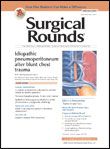Fatality Risk Falling in Total Hip Replacement
Thanks to better anesthetics, new surgical techniques, and more consistent anticoagulant use to prevent venous thromboembolism, mortality after total hip replacement surgery is rare. Nevertheless, a patient's risk of death briefly increases following the procedure.

Thanks to better anesthetics, new surgical techniques, and more consistent anticoagulant use to prevent venous thromboembolism (VTE), mortality after total hip replacement surgery is rare. Nevertheless, a patient’s risk of death briefly increases following the procedure.
In a recent issue of Bone & Joint Research, a team of investigators from the Avon Orthopaedic Centre in the United Kingdom published the results of a systematic review designed to identify the modifiable risk factors that decrease the risk of postoperative mortality. Their analysis included 32 studies published over the past 10 years that examined the rates of 30- or 90-day mortality following total hip replacement.
The researchers estimated the pooled incidence of mortality during the first 30 and 90 days after hip replacement to be 0.30% and 0.65%, respectively. Despite the fact that those who underwent the procedure towards the end of the 10-year study period had more comorbidities, the authors reported the patients’ risk of death decreased over time.
The authors cited several systemic improvements that contributed to their positive findings, such as multidisciplinary assessment teams, spinal anesthesia, and aggressive thromboprophylaxis. They also identified the risk factors that predicted early mortality, which included older age, male sex, and comorbid conditions, particularly cardiovascular disease (CVD).
Although pulmonary embolism (PE) was deemed the leading cause of death related to total hip replacement for many years, the authors concluded that cardiovascular complications presently cause more postoperative fatalities.
